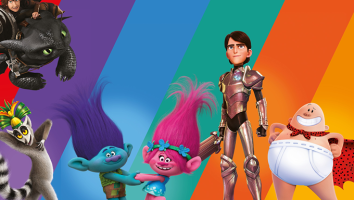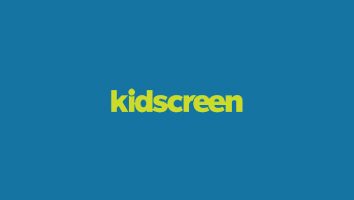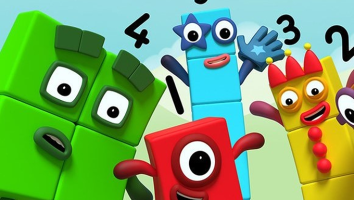The tech companies behind kids-only social platforms are some of the truest believers in the value of connecting children with each other, but lately they’ve been adopting a new focus.
Against a market backdrop shaped by the saturation of AVODs like YouTube, linear broadcasters and streamers slashing budgets, and escalating concerns about the effect of broader-reaching social media on children, these operators are starting to position themselves and build reputations as the best places for brands to engage with kids. And they also have aspirations of becoming go-to launchpads for companies that want to test out new content. At the same time, kids are flocking to these safer environments to avoid the toxicity and misinformation often found on social platforms for adults. And they represent a huge audience.
In the UK alone, 70% of five- to 18-year- olds with their own phones use them to access social platforms, with 7% of kids ages five to seven using TikTok every day, according to February data from Childwise. Meanwhile, in the US, two-thirds of 13- to 17-year-olds use TikTok, and around 60% of them use Instagram and Snapchat, according to surveys conducted by Pew Research Center last year.
Miami-based Zigazoo realized that when kids aged out of Zigazoo Kids, its three-year-old social platform for six- to 12-year-olds, there were few safe spaces where they could go to create and consume content. So it launched a new platform in March just for tweens and teens, simply called Zigazoo. (It’s worth noting that Zigazoo Kids has more than five million users who will eventually be looking to transition to an older-skewing experience.)
On both of the Zigazoo apps, content creators and brands can make videos, pose challenges and ask users questions. And kids can then respond in videos of their own. Since its launch, the company has raised more than US$20 million in funding.
Its success in the kids space comes from appealing to this audience’s desire to create and not just consume content. Meanwhile, brands say they enjoy Zigazoo because they can hear from real kids, and even take advantage of the user-generated content that comes from the platform in their marketing.
Companies of all sizes, including the NBA, Nickelodeon and Penguin Random House, have turned to Zigazoo Kids as a new and more engaging way to reach this audience, says Zigazoo founder and CEO Zak Ringelstein.
Connecting with kids on popular broader-reaching platforms such as YouTube and TikTok can be hard since they are totally oversaturated with content. Even new and emerging platforms like Roblox and Fortnite are already overflowing with brands looking to get in front of children.
But age-appropriate social media platforms are proving themselves to be fertile breeding grounds where brands can get discovered, stand out from the crowd and build an audience, says Ringelstein, adding that while it’s difficult to reach multiple youth demos at once, young kids and tweens keep coming back to Zigazoo for its challenge-based and creative focus that lets them create videos and engage with others through content.
Mix this chance to be a creator with some safety precautions—e.g. video moderation and only allowing users to respond to videos with positive emojis—and you have a recipe for serving up a place where kids want to be, adds Zigazoo Kids president Ashley Mady.

Zigazoo Kids has more than five million users, and the company has launched a new platform, Zigazoo, for them to grow into.
The company’s next goal is to attract more brands to its platforms, and an expanded portfolio of features might be key to achieving it. Zigazoo has already tested selling NFTs, and it’s now exploring new programs that let users subscribe to creators they like and redeem in-app currency for physical products in retail stores.
“Kids want places that are constructive, positive and safe where they can explore their interests and be themselves,” says Ringelstein. “It’s all about figuring out how to create the best playgrounds possible.”
Florida’s Grom Social Enterprises sees the under-13 crowd—too young to be on major platforms like TikTok and Snapchat, but eager to connect with friends and their favorite brands online—as its social media sweet spot. With this in mind, the 12-year-old company is relaunching its Grom Social kids app in October to provide more opportunities for brands to make a home for themselves.
To attract kids and protect their privacy, Grom is rebooting its app with a new feature to create customized avatars that can stand in for kids in photos and videos—and it also lets them choose licensed avatars for a small fee.
Grom’s monetization model has an in-app currency that kids can spend on accessories to personalize their avatars as well. And the company plans to offer ad sales opportunities to third-party brands that want to have their posts and profiles highlighted.
Company founder Zach Marks started Grom Social when he was just 12 years old; at the time, his parents didn’t want him on social media, but he was looking for a way to connect with his friends online. With the rebooted app, Marks is looking to target that exact same demo of kids who aren’t allowed on older-skewing platforms but are still hungry for fun connectivity.
The new app is COPPA-compliant and it doesn’t share any kid data. But safety isn’t exactly a strong selling point for its users; social apps have to first and foremost be fun to draw them in, says Paul Ward, Grom’s president of social media and EVP of enterprises. With a background in marketing at Nickelodeon, Ward knows that kids want an escapist experience.
The company has run its social platform for several years, but more recently it has been building up a content business that will be leveraged on the new platform. Grom acquired Philippines-based animation studio Top Draw in 2016 and California’s Curiosity Ink Media in 2021. The strategy behind these moves is double-edged: To fortify Grom Social with new shows and brands, and to get eyeballs on its proprietary content at an early stage.
Launching content such as Christmas- themed feature film Santa.com and animated series Baldwin on Grom Social will give the company a chance to see what kids like. And it can also build a DTC business through the platform by selling related avatars, outfits and accessories. Grom isn’t looking to compete with social media giants like TikTok or Snapchat, which have massive teams and huge development budgets. But there’s a growing niche market for safe digital spaces made just for kids that the company is very interested in.
Parents have expressed a strong demand for environments where kids can be fun and safe, while also learning how to be good digital citizens, says Marks. Acting as “digital training wheels” is a major aim for kids social platforms, which are most attractive to families when they teach children how to behave both online and IRL, says Rajeev Gupta, founder of GeckoLife.
Leaning into that goal, the Australian platform is taking a more collaborative approach to social media, letting users create private groups of friends and family members and share memories, photos, videos and posts privately with this community.
The platform doesn’t offer a messaging function; instead it focuses on providing families with a secure place where they can file away their memories. GeckoLife launched in 2014 and currently has around 25,000 users, roughly 10% of which are organizations and groups, says Gupta.
The company’s other aim is to become a place where brands and companies can share photos from events, post behind-the-scenes pics and deliver posts for their audiences. Content can be searched by looking up events or dates, so fans don’t have to go scrolling through long timelines to try and find what they’re looking for, says Gupta.
GeckoLife’s medium- to long-term goal is to evolve a white-label product that execs can bring into their own businesses as an information management and storage tool. In this way, GeckoLife can work for companies as an organizational mechanism that speeds up communication between teams with a simple user interface, where it’s easy for a producer to message groups, for animators to find files and for creatives to make groups to speed up workflow and keep information private.
While GeckoLife won’t ever feature ads, Gupta says the company is exploring the possibility of charging groups and brands that use the service a lot.
Unlike TV channels and games that kids eventually outgrow and migrate away from, the hope is that GeckoLife’s posts and conversations will become a time capsule that users can revisit in the future. “Today, it’s about communicating and being connected,” says Gupta. But the long-term value of kids social media is in the older content that they can look back on. It’s as good as a memory.”
This story originally appeared in Kidscreen‘s August/September 2023 magazine.


























